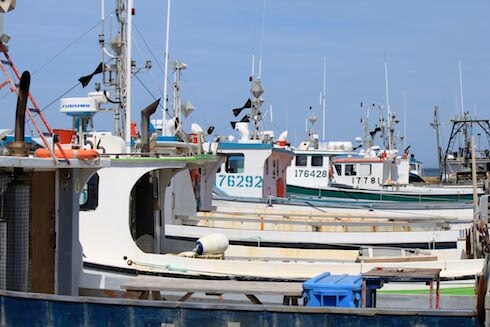Since January 1, 2017, the United States has adopted a new seafood import regulation: foreign fisheries wishing to export to the United States will have to protect marine mammals according to standards comparable to those applicable to American fisheries. According to an article published recently in the journal Science, if this regulation is accompanied by substantial investments to bolster the scientific and compliance capacities of developing countries, it could have considerable positive effects on the protection of marine mammals around the world.
US Marine Mammal Protection Act
The United States is a global leader in sustainable fisheries, with some of the most stringent laws and policies in the world to prevent overfishing of target species and accidental harm to other species. One of the main challenges for sustainable fisheries is that marine mammals are often killed accidentally in fishing operations. Fishing gear bycatch affects at least two-thirds of the world’s marine mammal species. Under the Marine Mammal Protection Act, enacted in 1972, federal authorities monitor the incidental catch of marine mammals in US fisheries. They are also developing plans to ensure that bycatch remains within well-defined limits that do not threaten marine mammal populations.
Seafood imports into the United States
The United States is the world’s largest importer of seafood, importing products from more than 120 countries. Canada, China and Indonesia are the largest exporters of seafood to the United States in terms of the value of their exports. But the countries most dependent on seafood exports to the US as a percentage of their GDP – and thus potentially the most affected by the new regulation – are predominantly small developing island states and some small Latin American countries.
Objectives and effects of the new regulation
The new regulation seeks to leverage the United States’ market power to reduce incidental catches of marine mammals around the world. It also aims to level the playing field for US fishermen, who, unlike many of their foreign competitors, currently face monitoring costs and fishing restrictions to limit bycatch.
But will this regulation have the desired effect? According to the authors of the article published in Science, this will depend on several factors.
Notably, it will depend on how the National Oceanic and Atmospheric Administration (NOAA) defines standards that are “comparable in effectiveness” to US requirements for monitoring and limiting bycatch. An equivalence bar that is too low will make the new regulations ineffective and will not reduce the number of marine mammals killed in fisheries that export their products to the United States. And if NOAA sets the bar too high, some countries will elect to sell their products to other markets, such as China, instead of investing in new scientific and regulatory infrastructure to meet US standards.
The success of the regulation will also depend on the financial and technical resources available to the countries in order to comply within five years. Aid and development agencies and philanthropic organizations will be able to assist developing countries by providing them with funding and technical advice. Without such international assistance, this regulation might have little impact on the protection of marine mammals, in addition to bringing economic hardship to already poor communities. Since the ranges of most marine mammal populations overlap multiple countries, these communities could save resources by coordinating their monitoring efforts at the regional level.
Consequences for Canada
What will be the consequences of this new regulation for Canada, one of the largest exporters of seafood to the United States? The United States is the main destination of Canadian exports, accounting for roughly 64% of trade in fishery products. Robert Michaud, coordinator of the Quebec Marine Mammal Emergency Response Network (QMMERN), hopes that “this new regulation will accelerate the efforts already in place to document bycatch in Canada, reduce its occurrence and increase our response capacities.” Over the past 10 years, QMMERN has identified 78 cases in the St. Lawrence River of incidental catches of marine mammals (dead and alive) as well as animals showing signs of entanglement. This figure does not represent the total number of incidental catches, only the number of individuals observed and reported to QMMERN.
Sources:
U.S. seafood import restriction presents opportunity and risk (Science, December 16, 2016)
New US seafood rule shows global trade and conservation can work together (The Conversation, January 17, 2017)
Industry Overview for Fish and Seafood (Agriculture and Agri-Food Canada)
To learn more:
On Whales Online:





